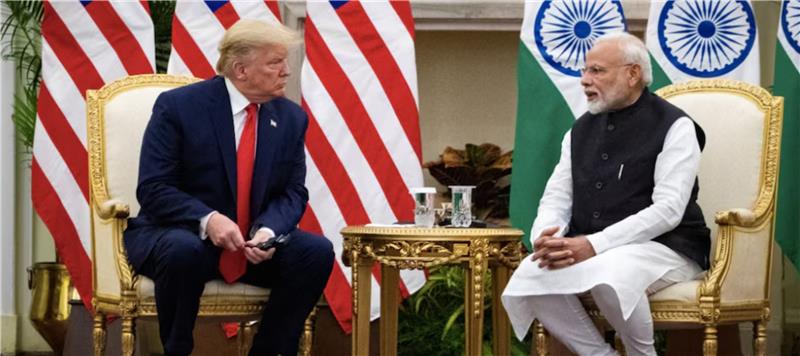U.S. Imposes 25% Tariff on Indian Exports: What It Means for Businesses in 2025
In a decision that has sent shockwaves through the corridors of global commerce, the United States of America has put in place a 25% tariff on many categories of exports from India. This policy change is part of a broader re-evaluation of Washington’s trade stance and comes amid growing pressure from domestic industries, and geopolitical tension. For India, this is a challenge, but also a wake up call. As the fifth largest economy, and a supplier to the world, the export community of India needs to reflect on its place in the India-US trade deal, and more broadly in bilateral relations.
India Tariffs on US Imports: A Possible Retaliatory Response?
The potential for retaliatory action against India tariffs on US imports has already been made clear by senior officials in New Delhi. While the Indian government is presently taking a measured approach, many analysts expect that retaliation will ensue if tariffs on Indian exports remain at 25% after the end of the quarter. However, this response will have to be carefully measured due to economic factors as well as diplomatic considerations.
In essence, the difficulty is illustrated by the size of the 25% tariffs on Indian exports. The tariffs cover every sector from auto parts and textiles to pharmaceutical ingredients and consumer electronics, and the impact is not merely symbolic or limited. The policy impacts nearly $11 billion worth of exports from India per annum products that previously received a competitive advantage by virtue of India’s relatively inexpensive manufacturing skillset.
India-US Trade Deal: Stretched, Not Broken
The India-US trade agreement has always worked through a combination of bilateral methods and preferential options, even though it is not technically a Free Trade Agreement (FTA). The new tariff notwithstanding, these arrangements are somewhat under pressure but are not necessarily in danger of collapse.
Indian officials continue to work closely with their U.S. counterparts through trade policy forums and trade dialogues but within a more constrained paradigm. U.S. Trade Representative (USTR) officials believe that tariffs are a long overdue corrective, for longstanding market asymmetries. India believes there are advances in regulatory transparency, strengthened intellectual property enforcement, and a willingness to be even more open in priority areas, that have resonance in many multilateral forums.
However, businesses on both sides are watching carefully. American buyers that source textiles, generic drugs, and tech hardware inputs are forced to deal with higher input costs or seek alternative sources of supply in Southeast Asia. Meanwhile, Indian exporters are forced to reconsider pricing and margins under this new cost regime.
Tariff on Indian Products in USA: Sectoral Breakdown
The tariff on Indian goods in the USA is not uniformly imposed across the sectors; It has a specific impact on small and mid-sized firms in labor-related sectors, namely garments, leather products, and home décor. These sectors contribute significantly to India’s employment numbers and now face an abrupt cost disadvantage in the largest market for their products.
The pharmaceutical industry, a longstanding pillar of India’s export economy, is also a casualty of the tariff regime. While all drug formulations do not fall under the new regime, important bulk drugs and intermediates are fully in the tariff regime. In addition to losing price competitiveness, the tariff introduces a significant supply chain issue for the U.S. based generic manufacturing business that sources inputs from India.
Auto parts and electronic components are also caught in this net. Because these were some of the fastest growing sectors of India’s export basket, the tariff represents a deceleration in an area that until now has shown a robust upward trend.
Domestic Ramifications and the Bigger Picture
The tariff on Indian goods in the USA is not completely uniform across the sectors; it is also specifically detrimental to small and mid-sized companies in labor intensive sectors, specifically garments, leather goods, and home décor. These sectors create significant employment numbers for India, and they have now experienced an unanticipated cost disadvantage in the largest market for their goods.
The pharmaceutical sector, which has long been a backbone of India’s export economy, is similarly a casualty of the tariff. While not all drug formulations are subject to the new regime, almost every bulk drug and intermediate has been brought into the tariff regime. All the while losing price competitiveness, the tariff raises a new supply chain problem for the U.S. based generic manufacturing industry which sources inputs from India. The auto parts and electronic components also fall into the net. The tariff represents a slowdown in what were some of the fastest growing sectors of India’s export basket; until now, these sectors had demonstrated a very strong upward trend.
Looking Ahead: Navigating India Export Challenges 2025
As exporters deal with the practical effects, Indian export challenges 2025 have manifested differently – this is no longer about logistics bottlenecks or pandemic recovery – it is about learning to operate in an environment where trade policy uncertainty is the norm.
Indian enterprises will need to strengthen their understanding of non-tariff barriers, invest in product diversification, and ditchto digital supply chain/ freight tools that incentivize agility. Some boards may have already tabled discussions about strategic decoupling from reliance on the U.S. market, however, in many cases, this will take time.
It’s notable that Europe, Africa, and the Middle East repositioned themselves as high-potential markets for Indian goods. Expect government-led trade missions into these markets to increase significantly over the next twelve months, with an established review of the export promotion (council) structure in India.
Conclusion
This is a defining moment for both Indian exporters and trade strategists. The imposition of a 25% tariff on Indian exports is not just a policy; it is a stress test on India’s export apparatus and its capacity to anticipate markets in the future. The India-US trade deal continues to be a useful framework but now requires urgent action, deeper institutionalization, and a strategic reset.
Regardless of any future India tariffs on US imports, what has created certainty is that our global trading environment is changing. Indian businesses must now demonstrate resilience, foresight, and an ability to adapt. As uncertainty becomes the new normal, logistics will diverge between exporters who thrive, and exporters who survive. The speed and sophistication of how well businesses adapt collectively will determine how they successfully navigate these operational challenges.









